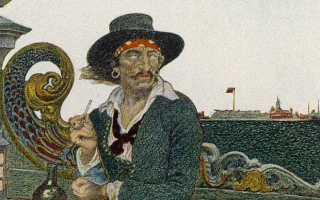Top 10 Oldest Civilizations of All Time
Humanity has developed various civilizations throughout history, and the establishment of urban settlements is the defining hallmark of a "civilized" society. ... read more...A sedentary non-nomadic population, monumental buildings, the existence of social classes and inequality, and the development of a writing system for communication are also features of civilization. The transition from basic societies to civilization's complex communities is gradual. They could build massive temples and palaces and immerse themselves in the blossoming fields of art, philosophy, and politics. In this article, we want to provide you with information about the 10 oldest civilizations of all time.
-
Mesopotamia, one of the oldest civilizations of all time, is a historical region in Western Asia located in the northern part of the Fertile Crescent, along the Tigris-Euphrates river system. Mesopotamia currently occupies modern Iraq. In a larger sense, the historical territory includes modern-day Iraq and Kuwait, as well as parts of modern-day Iran, Syria, and Turkey.
The Sumerians and Akkadians (including Assyrians and Babylonians) governed Mesopotamia from the dawn of written history (c. 3100 BC) until the Achaemenid Empire invaded Babylon in 539 BC. It fell to Alexander the Great in 332 BC, and after his death, it became part of the Greek Seleucid Empire. Later, the Arameans governed much of Mesopotamia (c. 900 BC - 270 AD). From roughly 10,000 BC, Mesopotamia was the site of the initial Neolithic Revolution advancements. It is credited for "inspiring some of the most significant developments in human history, such as the invention of the wheel, the planting of the first cereal crops, and the development of a cursive script, mathematics, astronomy, and agriculture." It is regarded as the birthplace of many of the world's ancient civilizations.
Mesopotamia was ruled by the Parthian Empire in 150 BC. It became a battleground between the Romans and the Parthians, with western parts of the region briefly falling under Roman authority. The eastern areas of Mesopotamia were conquered by the Sassanid Persians in 226 AD. The territory was divided between the Roman (Byzantine from 395 AD) and Sassanid Empires until the 7th century when the Sasanian Empire conquered Persia and the Muslims conquered the Levant from the Byzantines. Between the 1st and 3rd centuries BC, a number of mostly neo-Assyrian and Christian native Mesopotamian states existed, notably Adiabene, Osroene, and Hatra.
Period: 3500 BC–500 BC
Original location: within the Tigris–Euphrates river system, in the northern part of the Fertile Crescent
Current location: Iraq, and parts of modern-day Iran, Syria, and Turkey
Major highlights: The first civilization in the world
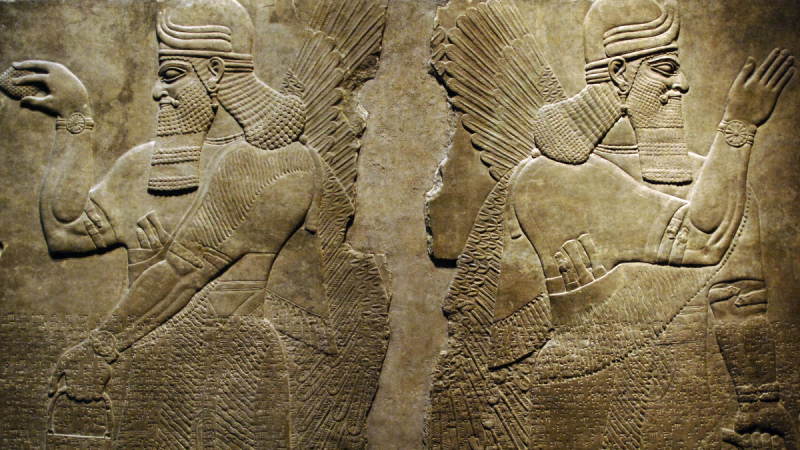
history.com 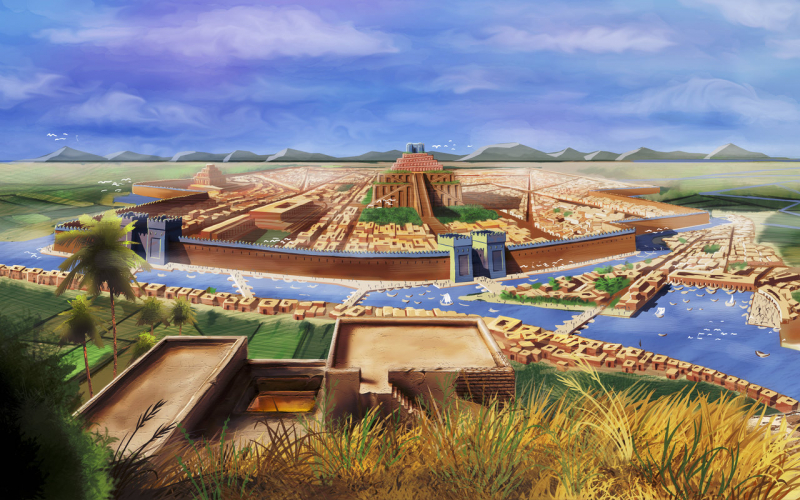
ecwausa.org -
The Indus Valley Civilisation, also known as the Indus Civilisation or the Sindhu-Sarasvati Civilisation, was a Bronze Age civilization in the northwestern areas of South Asia that lasted from 3300 BCE to 1300 BCE, and from 2600 BCE to 1900 BCE in its final form. It was one of three early civilizations of the Near East and South Asia, and it was the most extensive of the three, with an estimated population of about five million people in its mature (Integration) phase. Its locations were spread across northeast Afghanistan and parts of Pakistan, as well as western and northwestern India.
From the Arabian Sea to the Ganges, the Indus River lowlands cover more than 386,000 square miles (1 million square kilometers). The civilization thrived in the alluvial plain of the Indus River, which runs the length of Pakistan, as well as along a network of perennial monsoon-fed rivers that originally ran near the Ghaggar-Hakra, a seasonal river in northwest India and eastern Pakistan.
The ancient Indus towns were known for their urban planning, baked brick dwellings, intricate drainage systems, water delivery systems, clusters of enormous non-residential buildings, and handicraft and metalworking techniques. The Indus culture is also known as the Harappan civilization, after its type site Harappa, which was the first to be excavated early in the twentieth century in what was then British India's Punjab region and is now Pakistan's Punjab. Neolithic cultures inhabited the early Harappan cultures, the most famous of which is Mehrgarh in Balochistan, Pakistan. To separate it from earlier cultures, the Harappan civilization is sometimes referred to as Mature Harappan.
Despite the fact that over a thousand Mature Harappan sites have been reported and nearly a hundred excavated, there are five major urban centers: Mohenjo-daro in the lower Indus Valley (designated a UNESCO World Heritage Site in 1980 as "Archaeological Ruins at Moenjodaro"), Harappa in the western Punjab region, Ganeriwala in the Cholistan Desert, Dholavira in western Gujarat (designated by UNESCO World Heritage Site in 2021 as "Dholavira: A Harappan City"), and Rakhigarhi in Haryana.
Period: 3300–1300 BC; mature period 2700-1700 BC
Original location: Basins of the Indus river, Pakistan and the seasonal Ghaggar-Hakra river, northwest India and eastern Pakistan
Current location: in modern Pakistan, north-west India, and Afghanistan
Major highlights: One of the most widespread civilizations
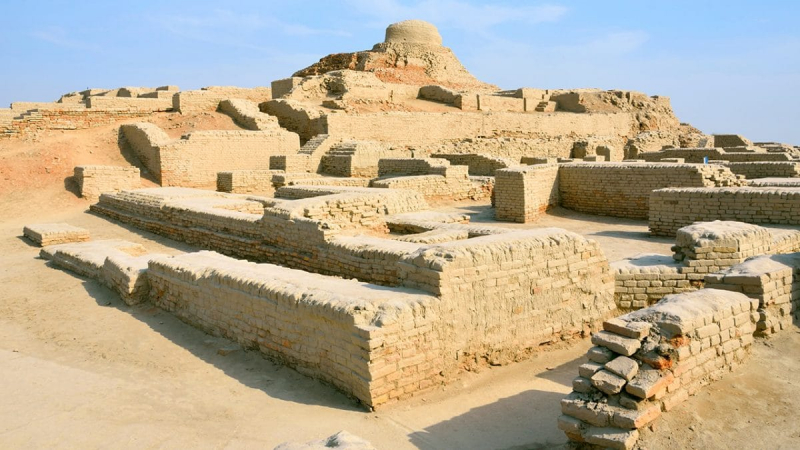
whoi.edu 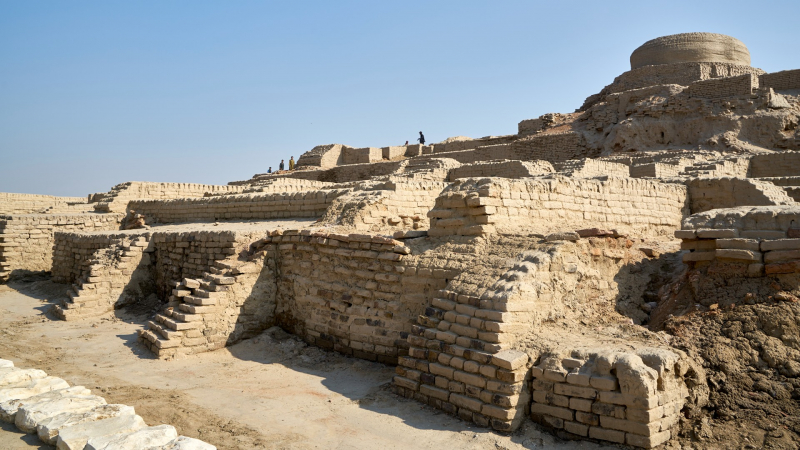
livescience.com -
Ancient Egypt was a civilization in ancient Northeast Africa, located in Egypt's Egyptian Nile Valley. Prehistoric Egypt gave way to ancient Egypt, which came to a head circa 3100 BC (according to standard Egyptian chronology) with the political unification of Upper and Lower Egypt under Menes (often identified with Narmer). Ancient Egypt's history was characterized by a sequence of stable kingdoms separated by periods of relative insecurity known as Intermediate Periods: the Old Kingdom of the Early Bronze Age, the Middle Kingdom of the Middle Bronze Age, and the New Kingdom of the Late Bronze Age.
The ability of ancient Egyptian civilization to adapt to the agricultural circumstances of the Nile River valley contributed to its prosperity. The fertile valley's predictable flooding and managed irrigation generated excess harvests, which supported a more dense population, as well as social development and culture. With extra funds, the administration supported mineral extraction in the valley and surrounding desert regions, the early development of an independent writing system, the organization of collective construction and agricultural projects, trade with neighboring regions, and a military designed to assert Egyptian dominance. A bureaucracy of elite scribes, religious leaders, and bureaucrats under the supervision of a pharaoh motivated and organized these efforts, ensuring the collaboration and unity of the Egyptian people in the context of an extensive system of religious beliefs.
The ancient Egyptians' many achievements include quarrying, surveying, and construction techniques that aided in the construction of monumental pyramids, temples, and obelisks; a mathematical system, a practical and effective system of medicine, irrigation systems, and agricultural production techniques, the first known planked boats, Egyptian faience and glass technology, new forms of literature, and the earliest known peace treaty, made with the Hittites.
Ancient Egypt has left an indelible mark. Its art and architecture were widely copied, and its relics were taken to distant lands. For millennia, its colossal ruins have captivated the minds of tourists and writers. In the early modern period, Europeans and Egyptians developed fresh regard for antiquities and excavations, which led to the scientific examination of Egyptian civilization and a greater appreciation of its cultural legacy.
Period: 3150 BC - 30 BC
Original location: along the River Nile
Current location: Egypt
Major highlights: The pyramids of Giza
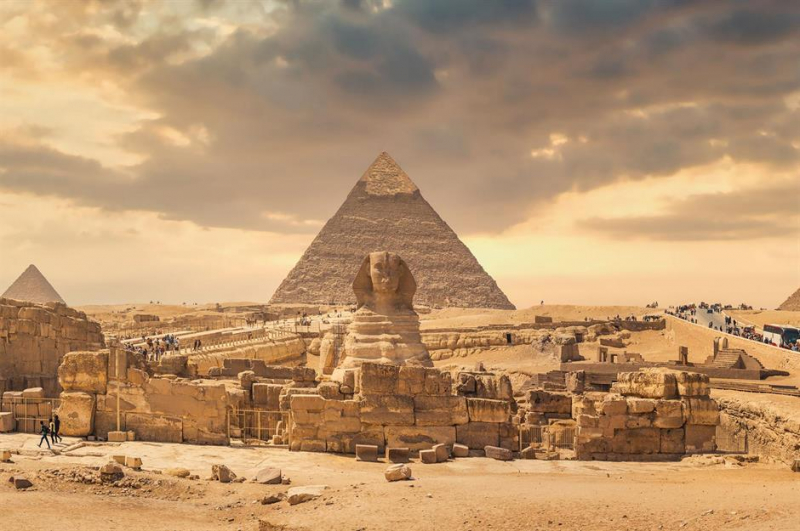
loveexploring.com 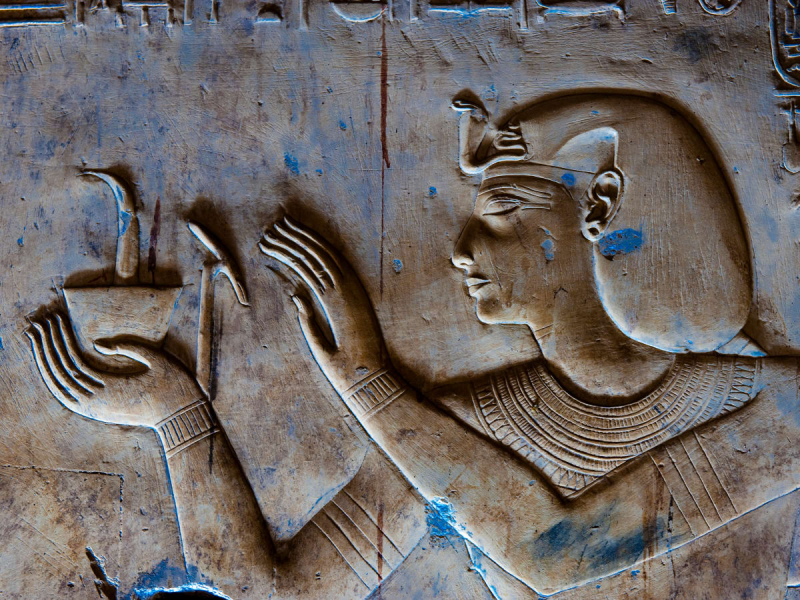
history.com -
The Maya civilization, one of the oldest civilizations of all time, was a Mesoamerican civilization founded by the Maya people that was notable for its logosyllabic script, the most sophisticated and highly developed writing system in pre-Columbian Americas, as well as its art, architecture, mathematics, calendar, and astronomical system. The Maya civilization flourished in the Maya Region, which today includes southeastern Mexico, all of Guatemala and Belize, and western Honduras and El Salvador. The northern lowlands of the Yucatán Peninsula and the Sierra Madre highlands, the Mexican state of Chiapas, southern Guatemala, El Salvador, and the southern lowlands of the Pacific littoral plain are all included. Today, their descendants, known as the Maya, number well over 6 million people, speak over twenty-eight surviving Mayan languages, and live in virtually the same area as their forefathers.
4,000 years ago, the Maya lived there (about 2000 BC). The Maya region was home to complex societies during the time. The Maya diet's staple foods were grown. Their diet consisted of maize, beans, squash, and chili peppers. Around 750 BC, the first Maya cities arose. The Mayas had a written language as well as a numerical system. They were talented in art and architecture, and their priests researched stars and planets to help them create calendars.
Between 420 and 900 AD, the Maya civilization was the most powerful. From central Mexico through Honduras, Guatemala, and northern El Salvador, the Maya civilization spread. It is thought that the civilization had at least ten million people at its peak. The Maya traded with people from different parts of the Americas. Their art and architecture are diverse in style. This demonstrates how frequently they exchanged. They made improvements to their structures to make them even better. After 900 AD, the Maya civilization began to decline.
The Conquistadors arrived in the 15th century and conquered Mexico and later Central America, including Mayan territory. The Maya people, however, continue to reside there today. They reside in the same locations where the Mayans once lived. They maintain the original Mayan beliefs and practices. Many Mayan languages are still spoken today, notably the Achi language.
Period: 2600 BC–900 AD
Original location: the Maya Region
Current location: Chiapas and Tabasco in Chicago, and the Yucatán Peninsula states of Quintana Roo, Campeche and Yucatán, Guatemala, Belize, El Salvador, and western Honduras
Major highlights: Astronomical expertise and logosyllabic script
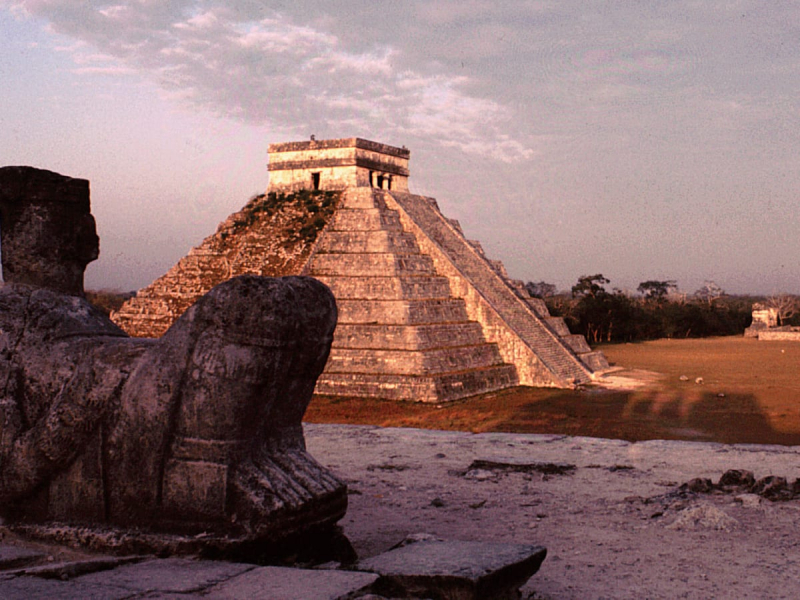
El Castillo, at Chichen Itza -history.com 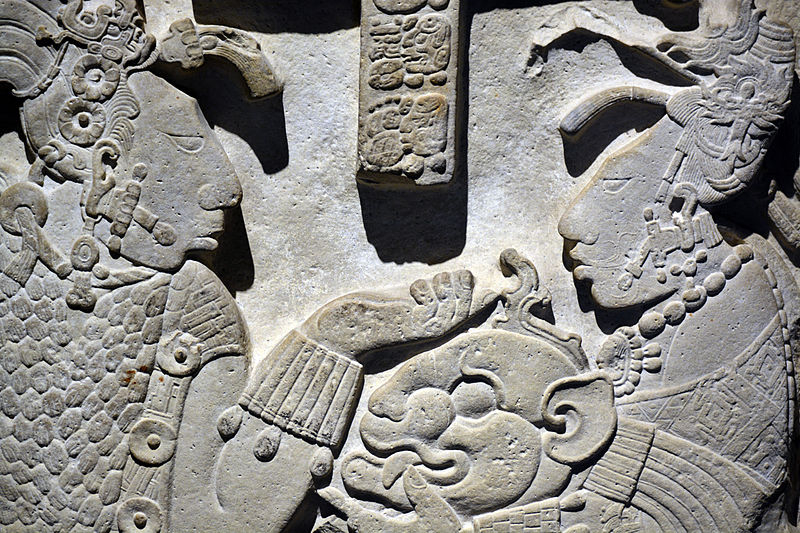
Detail of Lintel 26 from Yaxchilan -en.wikipedia.org -
Ancient Greece civilization, one of the oldest civilizations of all time, was a northeastern Mediterranean civilization that existed from the 12th-9th century BC until the end of classical antiquity (about AD 600) and consisted of a loose collection of culturally and linguistically connected city-states and other areas. The majority of these regions were legally unified just once, for 13 years, from 336 to 323 BC, during Alexander the Great's empire (albeit this includes a number of Greek city-states free from Alexander's rule in the Western Mediterranean, around the Black Sea, Cyprus, and Cyrenaica). Classical antiquity was soon followed by the Early Middle Ages and the Byzantine period in Western history.
In the eighth century BC, roughly three centuries after the Late Bronze Age collapse of Mycenaean Greece, Greek urban poleis began to appear, ushering in the Archaic period and the colonization of the Mediterranean Basin. This was followed by the Classical Greek period, which lasted from the Greco-Persian Wars to the 5th to 4th centuries BC and includes the Golden Age of Athens. Alexander the Great of Macedon's conquests pushed Hellenistic civilization from the western Mediterranean to Central Asia. The Hellenistic period came to an end with the Roman Republic's conquest of the eastern Mediterranean realm, the annexation of the Roman province of Macedonia in Roman Greece, and later the province of Achaea during the Roman Empire.
The Greeks invented the ancient Olympics, as well as the concepts of democracy and the Senate. They established the groundwork for modern geometry, biology, and physics. Pythagoras, Archimedes, Socrates, Euclid, Plato, Aristotle, and Alexander the Great whose discoveries, theories, beliefs, and heroics influenced subsequent civilizations. Classical Greek culture, particularly philosophy, had a significant impact on ancient Rome, which spread a version of it throughout the Mediterranean and most of Europe. As a result, Classical Greece is widely regarded as the cradle of Western civilization, the fundamental culture from which many of the contemporary West's founding ideals and ideas in politics, philosophy, science, and art come.
Period: 2700 BC-479 BC
Original Location: Italy, Sicily, North Africa, and France to the west
Current Location: Greece
Major highlights: Olympic Games, Greek religion, Greek mythology, Greek law, Greek pottery
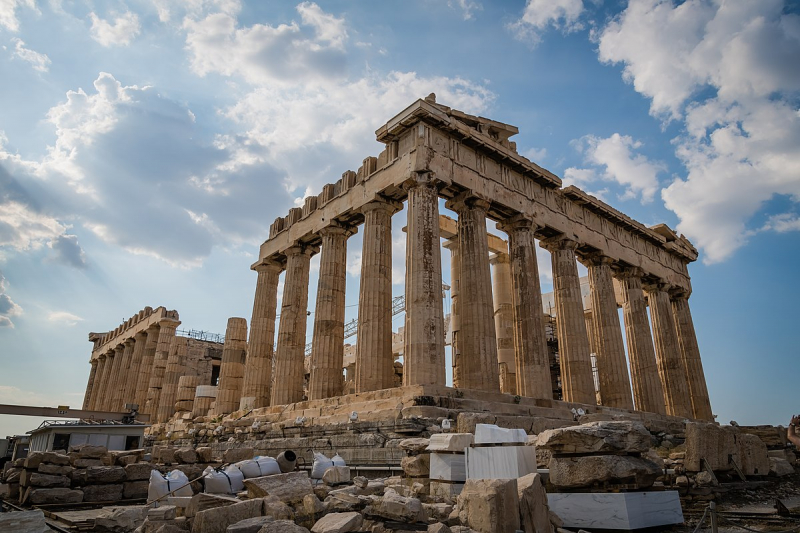
en.wikipedia.org 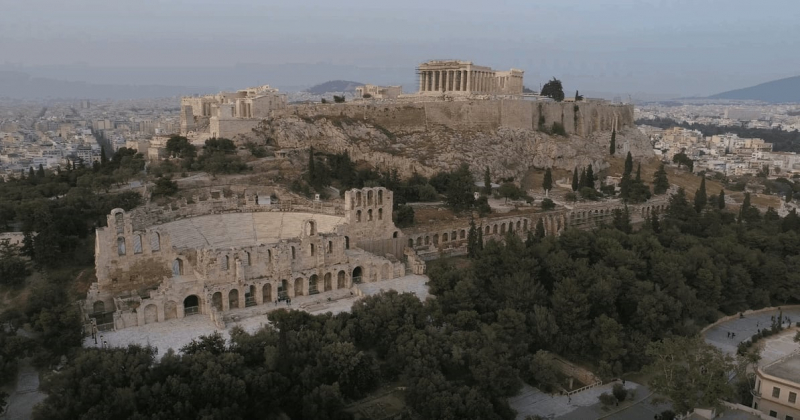
odysseytraveller.com -
The earliest known written records of Chinese history originate from 1250 BC, from the Shang dynasty (c. 1600-1046 BC), during the reign of King Wu Ding, known in records as the twenty-first King of Shang. The Book of Documents (early chapters, 11th century BC), the Bamboo Annals (c. 296 BC), and the Records of the Grand Historian (c. 91 BC) mention and describe a Xia dynasty (c. 2070-1600 BC) preceding the Shang, but no writing from the period is known, and Shang writings do not indicate the existence of the Xia. The Shang ruled in the Yellow River valley, widely regarded as the cradle of Chinese civilization. Neolithic civilizations, on the other hand, arose in diverse cultural centers along both the Yellow and Yangtze rivers. These civilizations on the Yellow and Yangtze rivers arose millennia before the Shang. With thousands of years of continuous history, China is considered one of the world's oldest civilizations and one of the cradles of civilization.
Historians believe certain truths about the prehistory of China. Homo erectus, an early human species, existed in China about a million years ago. Later, 65,000 years ago, modern humans, Homo sapiens, arrived in China from Africa. They hunted wild animals for food. They also started picking and gathering fruits, which led to the Chinese learning to cultivate about 5000 BC. They had begun to cultivate rice and maybe other grains. China entered the Bronze Age by 2500 BC. A ruling class of kings and queens had entered society.
Period: 1600 BC–1046 BC
Original Location: Yellow River and Yangtze region
Current Location: China
Major Highlights: Invention of paper and silk
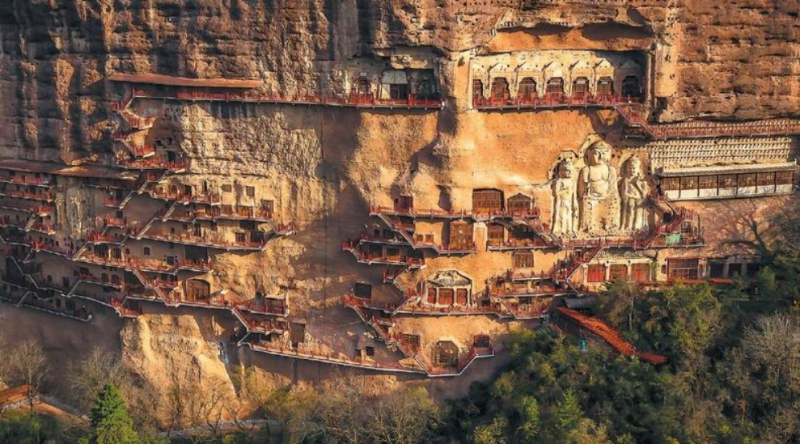
The Yellow River civilization -chinadailyhk.com 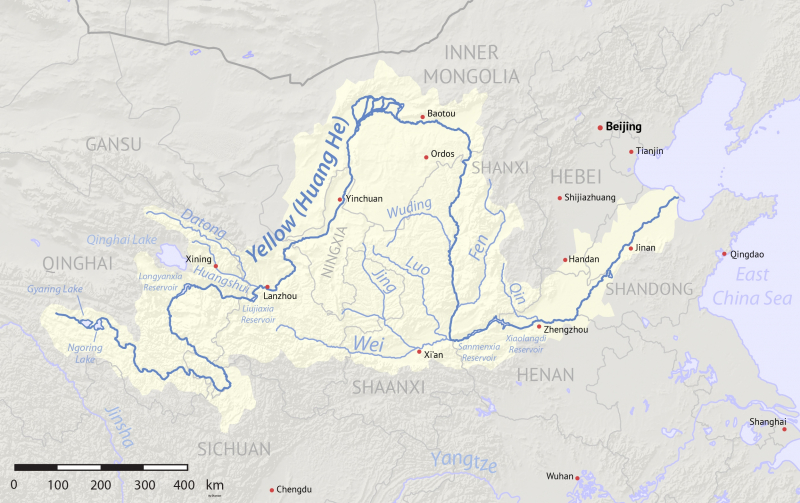
The Yellow River civilization -en.wikipedia.org -
The Persian Civilization was one of the world's largest civilizations. It began as a group of semi-nomadic tribes. On the Iranian Plateau, they raised goats, sheep, and cattle. Cyrus the Great established this empire in 550 BCE. Cyrus was the leader of one of these semi-nomadic tribes. After the Babylonian Empire fell, they acquired control of the Middle East for the first time. The Achaemenid Empire was another name for the Persian Empire. They established the world's first human rights charter. The Persian civilization is regarded as one of the scientific civilizations; they invented numerous innovative and revolutionary inventions that we still use today, such as the battery, the refrigerator, the postal service, and sulfuric acid. These inventions demonstrate that the Persian civilization's residents were highly advanced and intelligent. Let us examine the Persian civilization's discoveries and innovations.
The Medes created Persia's first empire. In contrast, the Achaemenids formed the first Iranian world empire. After the Medians were supplanted by the Achaemenids, the province of Parsa in Iran became the core of a vast empire that spanned most of West Asia, Anatolia, and Egypt. The ancient Greeks called Parsa Persis, which closely corresponds to the contemporary Iranian region of Fars. Because their homeland was Parsa or Persis, the Achaemenid empire became known as the Persian empire. As a result, in antiquity, the Greeks and later other peoples used the Achaemenids' birthplace as the name for the entire Iranian plateau.
Period: 550 BC–331 BC
Original location: From Egypt in the west to Turkey in the north, and from Mesopotamia to the Indus River in the east
Current location: Modern-day Iran
Major highlights: the first to create regular communication routes connecting three continents - Africa, Asia, and Europe
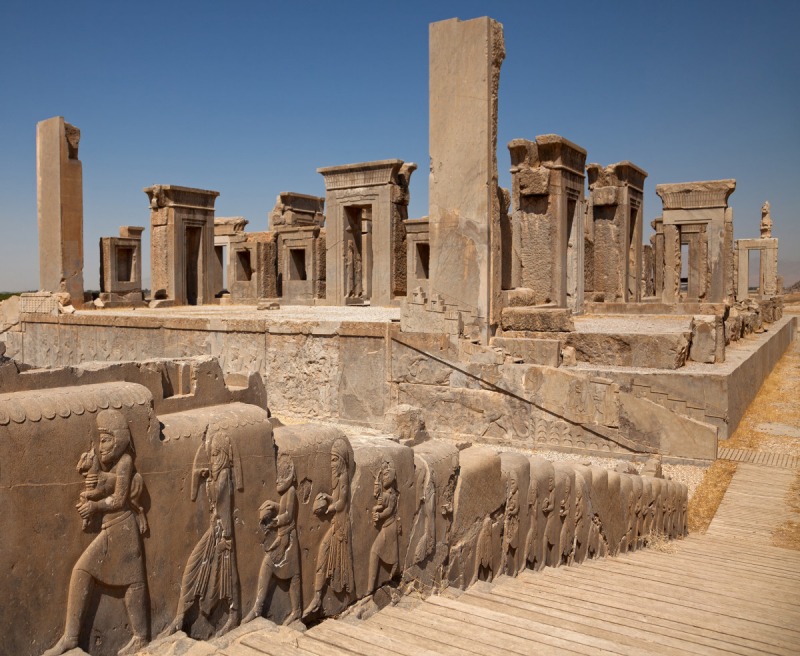
Persian Empire -history.com 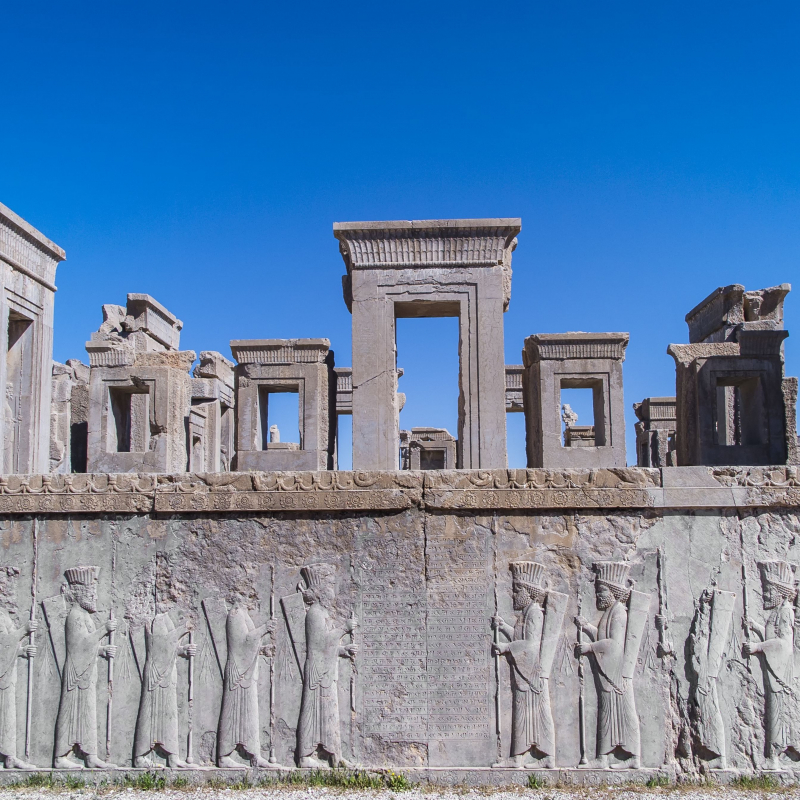
Persian Empire -thoughtco.com -
One of the oldest civilizations we want to introduce to you is the Roman Civilization. According to a History.com author, Ancient Rome expanded from a small town on central Italy's Tiber River in the seventh century B.C. into an empire that at its peak encompassed much of continental Europe, Britain, much of western Asia, northern Africa, and the Mediterranean islands. The widespread usage of Romance languages (Italian, French, Spanish, Portuguese, and Romanian) derived from Latin, the present Western alphabet and calendar, and the establishment of Christianity as a dominant world religion are among the numerous legacies of Roman domination. Following Julius Caesar's rise and collapse in the first century B.C., Rome became an empire after 450 years as a republic. The lengthy and glorious reign of its first emperor, Augustus, inaugurated a golden period of peace and prosperity; by contrast, the Roman Empire's decline and fall by the fifth century A.D. were among the most catastrophic implosions in human history.
Language, religion, culture, technology, law, politics, governance, military, art, literature, architecture, and engineering were all influenced by ancient Roman civilization. Rome professionalized and expanded its military and established the res publica system of government, which inspired modern republics such as the United States and France. It accomplished remarkable technological and architectural marvels, including the construction of aqueducts and highways throughout the empire, as well as more extravagant monuments and facilities.
Period: 550 BC–465 AD
Original location: on central Italy's Tiber River
Current location: Rome
Major highlights: the most powerful ancient civilization
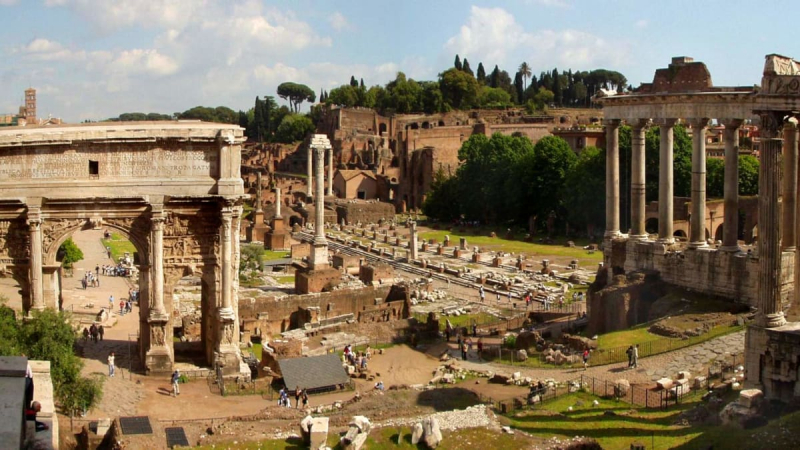
history.com 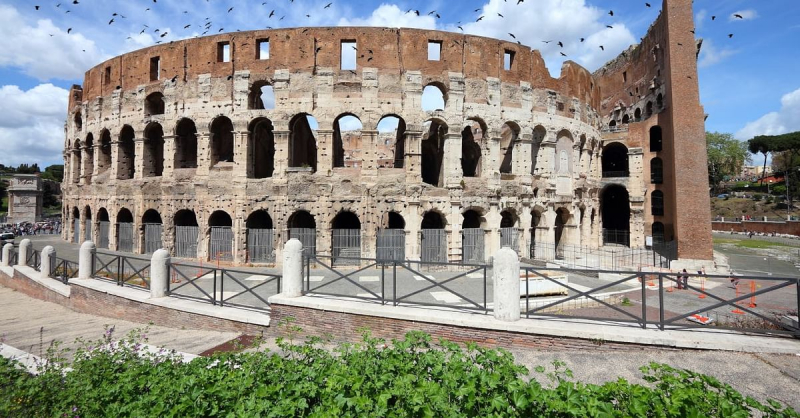
worldhistory.org -
The Aztecs were a Mesoamerican culture that existed in central Mexico from 1300 to 1521 during the post-classic period. The Aztecs were various ethnic groups from central Mexico, primarily those who spoke the Nahuatl language and ruled over significant sections of Mesoamerica from the 14th to the 16th centuries. The Aztec civilization was divided into city-states, some of which formed alliances, political confederations, or empires. Tenochtitlan, the city-state of the Mexica or Tenochca; Texcoco; and Tlacopan, once part of the Tepanec kingdom, whose dominating power was Azcapotzalco, became the Aztec Empire in 1427.
The Aztec civilization, with its capital city of Tenochtitlan (Mexico City), is the most well-documented Mesoamerican culture, with sources such as archaeology, native books (codices), and lengthy and detailed accounts from their Spanish conquerors - both military men and Christian clergy. Aztec culture and history are primarily known through archaeological evidence discovered in excavations such as the renowned Templo Mayor in Mexico City; indigenous writings; eyewitness accounts by Spanish conquistadors such as Cortés and Bernal Díaz del Castillo; and, most notably, descriptions of Aztec culture and history written in the Spanish or Nahuatl language by Spanish clergymen and literate Aztecs in the 16th and 17th centuries.
Aztec civilization had rich and sophisticated intellectual, mythological, and theological traditions at its peak, as well as impressive architectural and aesthetic achievements. According to Mark Cartwright (a professional scholar, researcher, historian, and editor for World History Encylopedia), the Aztec civilization was the last of the great Mesoamerican cultures before Europeans came. They erected spectacular temple pyramids, used complex agricultural techniques, their eagle warriors formed a large empire, and they sacrificed humans to their gods.
Period: 1345 AD-1521 AD
Original location: Pre-Columbian Mexico's southcentral region
Current location: Mexico
Major highlights: the last of the great Mesoamerican cultures
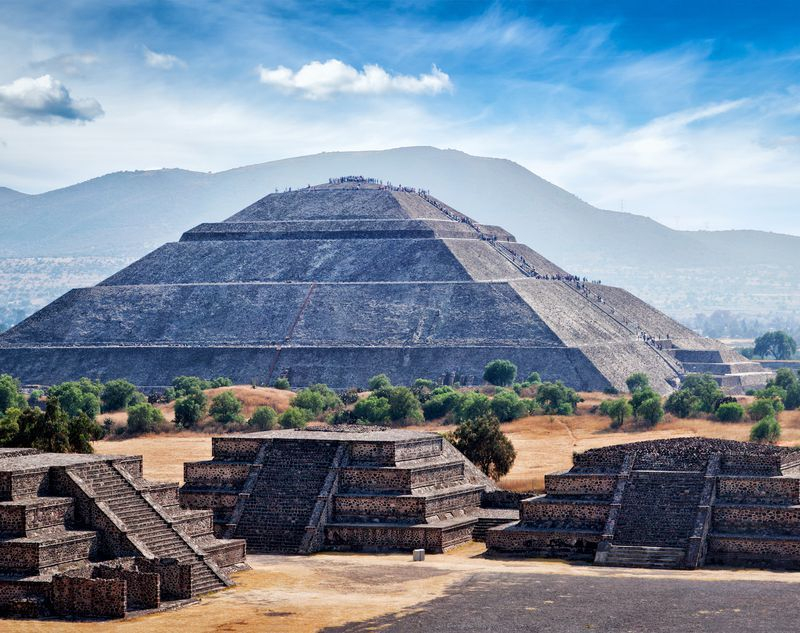
nationalgeographic.org 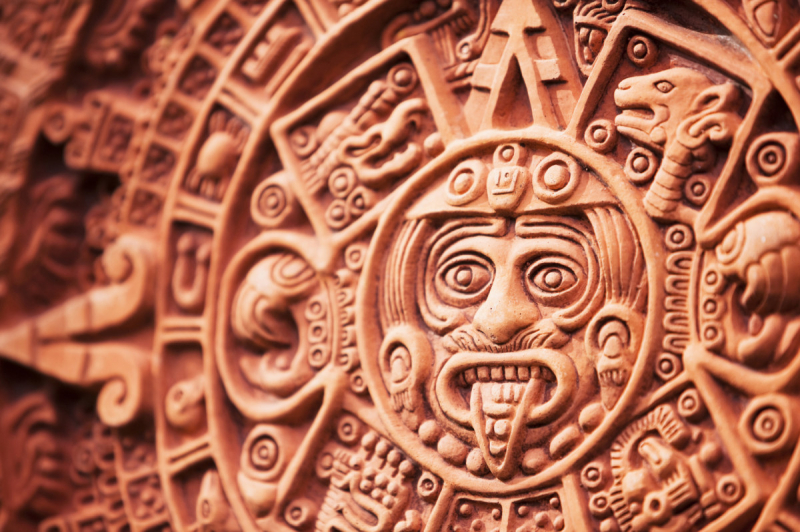
history.com -
Between approximately 1400 to 1533 CE, the Inca civilization flourished in ancient Peru, and their empire eventually spanned western South America from Quito in the north to Santiago in the south. It was the largest empire ever seen in the Americas and the world at the time. According to the editors of History.com, the Inca Empire was a South American empire that became increasingly stronger due to its rulers' military power and diplomacy. The Inca state, known as Tawantinsuyu, extended 2,500 miles from northern Ecuador to central Chile and had a population of 12 million people from over 100 different ethnic groups at its peak. A well-planned agricultural and road system, as well as a concentrated religion and language, all contributed to the state's cohesiveness. Despite their strength, the Inca were quickly defeated by the diseases and superior armament of Spanish invaders, and their last stronghold was taken in 1572.
The Inca civilization is notable for constructing the greatest empire ever seen in the Americas, amazing agricultural practices, and art and architecture that uniquely merged geometrical masonry with the natural landscape, according to Mark Cartwright (an author, researcher, historian, and editor). The Incas built the mountain city of Machu Picchu, worshipped the Sun, established the world's largest empire at the time, had no writing but employed quipu (thread and knots), and had a very effective mail system that took advantage of their excellent road system. After the advent of Francisco Pizarro and the Spanish Conquistadors in 1533, the Inca empire crumbled. Civil conflict and European diseases also had a significant role in their demise.
Period: 1400 AD–1533 AD
Original location: ancient Peru
Current location: Ecuador, Peru, and ChileMajor highlights: The Inca Empire, Machu Picchu
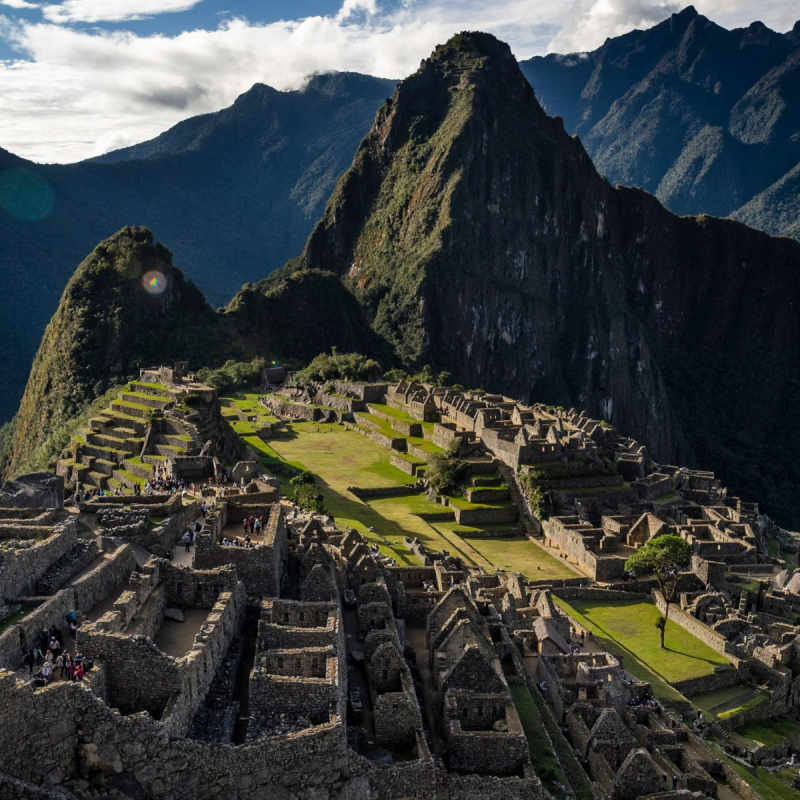
history.com 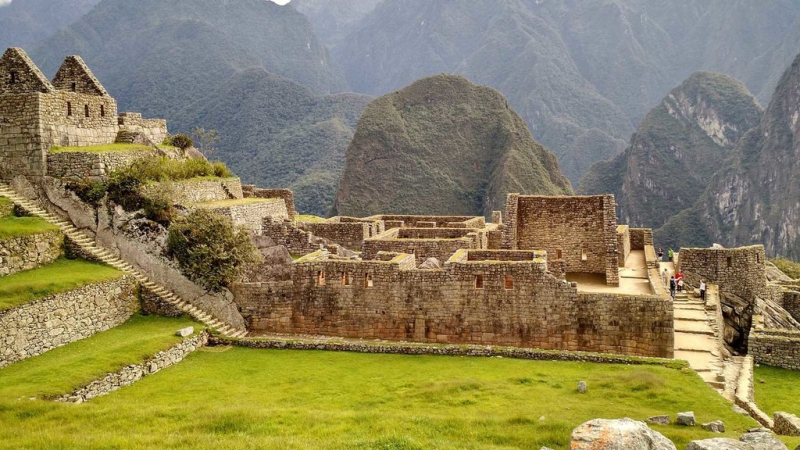
kimkim.com

























